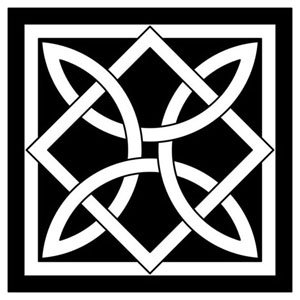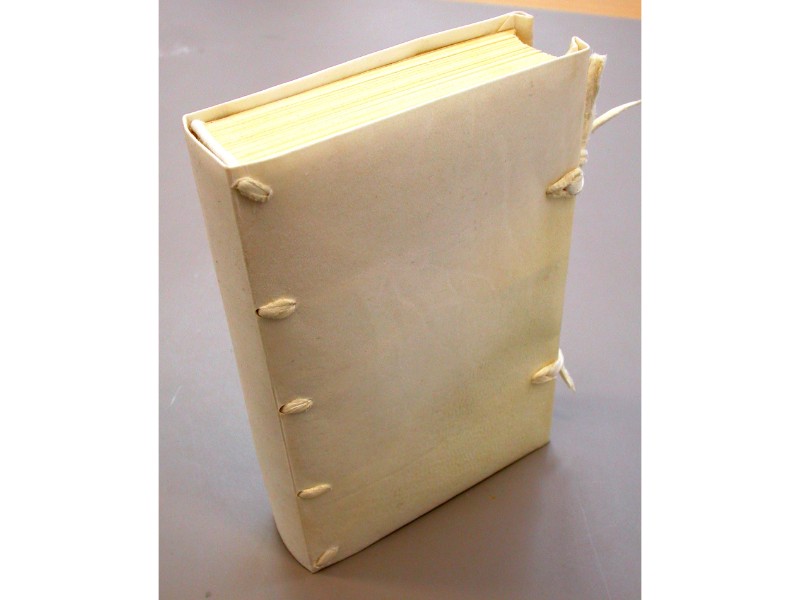Introduction to the History and Craft of Book Bindings
3 Units
Instructor: Prof. Giuliano Camilleri
COURSE STRUCTURE
Morning Lectures: Monday – Friday, 8:30 AM – 1:30 PM;
Workshop: Monday – Friday 3:00-7:00 PM;
Classroom: Book Binding studio
Course Description
No prerequisites required
Through a lecture and workshop format, this course introduces students to the history and evolution of Western bookmaking, from the handmade codex to modern industrialized book-making processes. Students craft 4 traditional books and in the process learn the materials, tools, sewing structures and assembly process of the various elements.
This course is designed primarily to provide knowledge and skills to people going into the field of book conservation/preservation and management of book resources, although it can also be useful to people going into the field of bookbinding and book design. For those planning a career as book conservators, this is a good introduction to the field to be followed up by further education. For those planning to manage book collections or archives, it offers basic skills in identifying the nature of bound material, understanding the state of preservation, best practices in handling, storage and conservation.
Students of the following subjects can find this program useful: Bookbinding, book conservation and restoration, library science, library management, archival sciences, management of rare book collections, book design, and history of technology.
Course Objectives
Student Learning Outcomes: Students who successfully complete this course will be able to:
Describe and define book components and writing supports
Identify and explain differences of book binding structures
Design and create four historical types of book bindings
Summary of Lecture Content
Book components and terminology, writing support/media
Overview of bound written material
Tablets
Scrolls
Bamboo books
Palm leaf books
Codex
Paper: Overview
Manufacturing techniques
Eastern paper
Western paper
Machine made paper
Parchment: Overview
Manufacturing techniques
Identification of animal skins
Decorative papers
Glue paper
Xylographic paper
Printed paper
Marbled paper
Writing area
Pricking
Ruling
Margins
Pagination
Inks
Carbon ink
Iron gall inks
Mixed inks
Printing inks
The book structure: general notions about book structure and terminology
Textblock
Sections, gatherings, quires (paper folding, paper sizes)
Textblock edges (trimming, cut, uncut, edge decoration)
Endleaves, (paste down, Fly leaves, integral endleaves, separate endleaves)
Sewing
Unsupported (Coptic-Islamic- Byzantine)
Supported (Western)
Sewing thread: vegetable fibres (linen, hemp, cotton), animal (silk, wool, gut), synthetic
Sewing supports: cord (single, double), tape, leather (tanned, alum tawed–strip, single, double, tongue, split, twisted)
Sewing techniques: Without supports (sewing with curved needle, chain stitch, kettle stitch. With support (with straight needle, on cords. Single, double, all along, herringbone sewing.)
Spine
Spine shapes (Rounded and backed, curved, flat)
Spine lining materials: vegetal materials (cotton, linen cloths), animals (leather, parchment), reused fragments, manuscript and printed waste
Spine lining techniques: over-all, transverse, comb, panel, slotted
Adhesives
Starch paste
Animal glue (rabbit, bovine, ovine, mixed)
Synthetics
Endbands: Western/Eastern
With cores
Without cores
Primary sewing (tiedowns, warps, single or double)
Secondary sewing (chevron, decorative, bead)
Endband attachment
Material for the cores: vegetable cord, synthetic, animal (leather strips)
Material for sewing: vegetable threads (linen, cotton), silks
Boards
Board material (wood, paper laminate, pulp board, millboard, manuscript/printed waste)
Board attachment (lacing in, sewn, lining attachment)
Board profiles (bevels, squares)
Cover
Covering material (leather, parchment, paper, textiles)
Turn-ins (square, mitre, tongue-mitre, overlapped)
Cover decoration (finishing tools, blind tooling, gold tooling, rolls, centre-pieces, small hand tools)
Fastenings
Fastening materials (leather, iron, bronze, silver)
Fastening components (ties, straps, pins, clasps, catchplates)
Afternoon Workshops
In the workshop sessions each student will create four blank page model bookbindings from scratch, copying historical binding techniques and making use of original materials and traditional tools.
Description of Assignments
Reading list supplied with acceptance to the program.
Create from scratch four blank page books using four historical bindings systems and original materials and tools.
Grade Breakdown:
Term paper #1: 8-page paper on a topic to be assigned 20%
Exam: mixed format – quiz and essay questions. 20%
Book #1 15%
Book #2 15%
Book #3 15%
Book #4 15%
Grading scale:
94-100 = A 90-93 = A-
87-89 = B+ 84-86 = B
80-83 = B- 77-79 = C+
74-76 = C. 70-73 = C-
67-69 = D+. 64-66 = D
60-63 = D- Below 60 = F














